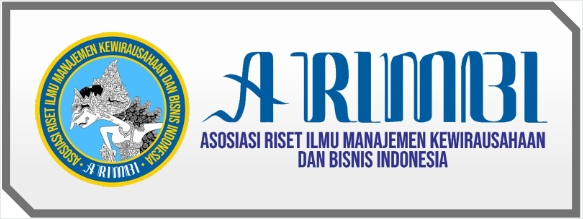The Effect of Dependency on Repurchase Intention and Technostress
DOI:
https://doi.org/10.30588/jmp.v8i1.377Keywords:
Convenience, dependency, media dependency theory, repurchase intention, smartphone, social influence, social need, technostressAbstract
This study aims to investigate the effect of convenience to dependency toward smartphone, the effect of social need to dependency toward smartphone, the effect of social influence to dependency toward smartphone, the effect of dependency toward smartphone on repurchase intention, and the effect of dependency toward smartphone on technostress. This research have five hypotheses. Data were collected from 170 respondents which got from questionnaire distributed to graduate degree students of Universitas Gadjah Mada, Yogyakarta. Based of the data collection, this analysis using structural equation modeling technique with software LISREL 8.72. The results of this research showed that convenience, social need, and social influence have positive and significant effects to dependency, while the dependency have positive and significant effects to repurchase intention and technostress. All (five) hypotheses on this research have been accepted. Each of those hypotheses discussed in detail through this article.References
Alcañiz, E.B., Mafe´, C. R., Manzano, J.A., & Blass, S.S. (2008). Influence of online shopping information dependency and innovativeness on internet shopping adoption. Online Information Review, Vol. 32 No. 5, pp. 648-667.
Auter, P.J. (2007). Portable social groups: willingness to communicate, interpersonal communication gratifications, and cell phone use among young adults. Interna-tional Journal Mobile Communications, Vol. 5 No. 2, pp. 139-56.
Ayyagari, R., Grover, V., & Purvis, R. (2011). Technostress: Technological Antece-dents and Implications. MIS Quarterly, 35 No.4, pp.1-10.
Ball-Rokeach, S.J. (1985). The Origins of Individual Media-System Dependency Theory: A Sociological Framework. Communication Research, Vol. 12 Issue 4, 1985.
Ball-Rokeach, S.J. & Defleur, M. (1989). Theories of Mass Communication. New York: Logman.
Ball-Rokeach, S.J. (1998). A Theory of Media Power and a Theory of Media Use: Different Stories, Questions, and Ways of Thinking. Mass Communication and Society, Vol.1 No.1-2, pp.5–40.
Backer, Elisa. (2010). Using Smartphone and Facebook in A Major Assessment: The Student Experience. E-Journal. Australia: University of Ballarat.
Charles, S. T., Piazza, J. R., Mogle, J., Sliwinski, M. J., & Alemida, D. M. (2013). “The wear and tear of daily stressors on mental health. Psychological Science, Vol. 24 No. 5, pp. 733-741.
Davis, F.D., Bagozzi, R.P., & Warshaw, P.R. (1989). User Acceptance of Computer Technology: A Comparison of Two Theoretical Models. Management Science, Vol. 35, No.8, pp. 982-1002.
Genova, G.L. (2010). The anywhere office = anywhere liability. Business Communica-tion Quarterly, Vol. 73, pp. 119-26.
Grant, A.E., Guthrie, K.K., & Ball-Rokeach, S.J. (1991). Television shopping: a media system dependency perspective. Communication Research, Vol. 18 No. 6, pp. 773-98.
Griffiths, M. (1998). Does Internet and Computer 'Addiction' Exist?: Some Case Study Evidence. Available at: http://www.intute.ac.uk/socialsciences/archive/iriss/papers /paper47.htm. Accessed on December 2015.
Hahn, J. (2010). Information seeking with Wikipedia on Ipod Touch. Reference Service Rewiew, 38(2), 284-298.
Hair J.R, Josep, F., Black, W.C., Babin, B.J., & Anderson, R.E. (2010). Multivariate Data Analysis. Seventh Edition. New Jersey: Pearson Prentice-Hall, Inc.
Hovart, A.T. (1989). Coping with addiction. Available at: http://www.cts.com/babt smrt/coping/html. Accessed on December 2015.
Hudson, A. (2010). Measuring the impact of cultural diversity on desired mobile refer-ence services. Reference Research Review, Vol. 38 No. 2, pp. 1-13.
Keaveney, S.M. & Parthasarathy, M. (2001), Customer switching behaviour in online services: An exploratory study of the role of selected attitudinal, behavioural, and demographic factors. Journal of the Academy of Marketing Science, Vol. 29 No. 4, pp. 374-90.
Klobas, J.E. & Clyde, L.A. (2001). Social influence and internet use. Library Management, Vol. 22 No. 1, pp. 61-7.
Lee, Y.K., Chun, T.C., You, L., & Zhao, H.C. (2014). The dark side of smartphone usage: Psychological traits, compulsive behavior and technostress. Computers in Human Behavior, Vol.31, pp. 373-383.
Lippincott, J.K. (2010). A mobile future for academic libraries. Reference Services Review, Vol. 38 No. 2, pp. 1-20.
Loges, W.E. (1994). Canaries in the coal mine: Perception of threat and media system dependency relations. Communication Research, Vol. 21 No.1, pp. 5-23.
Mafe, C.R. & Blas, S.S. (2006). Explaining Internet dependency. Internet Research, Vol. 16 No. 4, pp. 380-97.
Mayasari, I. (2010). Mencermati Perilaku Smarthphone Niacs. Marketing, Edisi Minggu. Bisnis Indonesia, pp.13.
Mason, W.A., Conrey, F.D., & Smith, E.R. (2007). Situating social influence processes: Dynamic, multidirectional flows of influence within social networks. Personality and Social Psychology Review, Vol. 11, pp. 279-300.
Matusik, S.F. & Mickel, A.E. (2011). Embracing or Embattled by Converged Mobile Devices? Users' Experiences with A Contemporary Connectivity Technology. Human Relations, Vol. 64 Issue 8.
Millward, S. (2014). Indonesia Diproyeksi Lampaui 100 Juta Pengguna Smartphone di 2018 Keempat di Dunia. Available at: https://id.techinasia.com/jumlah-pengguna-smartphone-di-indonesia-2018. Accessed on December 2015.
O’Guinn, T.C. & Faber, R.J. (1989). Compulsive Buying: A Phenomenological Exploration. Journal of Consumer Research, Vol. 16, pp. 147-157.
Oliver, R.L. (1999). Whence consumer loyalty. Journal of Marketing, Vol. 63, No. 4, pp. 33-44.
Oulasvirta, A., Rattenbury, T., Ma, L., & Raita, E. (2012). Habits make smartphone use more pervasive. Personal and Ubiquitous Computing, Vol. 16(1): 105-114.
Patwardhan, P. & Yang, J. (2003). Internet dependency relations and online consumer behaviour: A media system dependency theory perspective on why people shop, chat, and read news online. Journal of Interactive Advertising, Vol. 3 No. 2, pp. 1-21.
Raskin, R. (2006). Facebook faces its future. Young Consumers, Vol. 4 No. 1, pp. 56-8.
Rice-Lincoln, S. (2011). 2012 Promises to Be the Year of Mobile Marketing. Available at: http://masterthenewnet.com/2012-promises-to-be-the-year-of-mobile-market-ing. Accessed on December 2015.
Schiffman L.G., Kanuk, L.L., & Wisenbut, J. (2009). Consumer Behavior. 10th ed. New Jersey: Pearson.
Shu, Q., Tu, Q., & Wang, K. (2008). Technostress under different organizational environments: An empirical investigation. Computers in Human Behavior, 24(6), pp. 3002-3013.
Stephen, K.K. & Davis, J. (2009). The social influences on electronic multitasking in organization meetings. Management Communication Quarterly, Vol. 23 No. 1, pp. 63-83.
Suki, N.M. & Suki, N.M. (2013). Dependency on Smartphones: An Analysis of Structural Equation Modelling. Jurnal Teknologi (Social Sciences), 62(1), pp. 49–55.
Thamrin, S.D. (2003). Studi Mengenai Proses Adopsi Konsumen Pasca Masa Tayang Iklan Produk Xon-Ce di Surabaya. Jurnal Sains Pemasaran Indonesia, Vol. 2 No 2: 141-154.
Tian, L., Shi, J., & Yang, Z. (2009). Why does half the world’s population have a mobile phone? An examiniation of consumers’ attitudes toward mobile phones. Cyber Pshycohology and Behaviour, Vol. 12 No. 5, pp. 513-516.
Tikkanen, I. (2009). Maslow’s hierarchy and pupils’ suggestions for developing school meals. Nutrition and Food Science, Vol. 39 No. 5, pp. 534-543.
Ting, D.H., Lim, S.F., Patanmacia, T., Low, C.G., & Gay, C.K. (2011). Dependency on smartphone and the impact on purchase behavior. Young Consumers, Vol. 12 No. 3, pp. 193-203.
Vahabzadeh, S., Duneghe, S.S., Khachoei, T.A. (2014). A Study of the Factors Influencing Dependency and Its Effect on the Purchase Behavior of the Iranian Consumers of Smartphones. Switzerland Research Park Journal, Vol. 103 No.2, pp. 1120-1132.
Wei, R. & Lo, V.H. (2006). Staying connected while on move: Cell phone use and social connectedness. New Media Society, Vol. 8 No. 1, pp. 53-72.
Wulandari, R. (2015). Hubungan Antara Kontrol Diri dengan Kecanduan Game Online pada Remaja di Warnet Lorong Cempaka Dalam Kelurahan 26 Ilir Palembang. Jurnal Fakultas Psikologi Universitas Bina Dharma Palembang.
Downloads
Published
How to Cite
Issue
Section
License
Authors who publish with Jurnal Maksipreneur agree to the following terms:
Authors retain copyright and grant the Jurnal Maksipreneur right of first publication with the work simultaneously licensed under a Creative Commons Attribution 4.0 International License that allows others to share (copy and redistribute the material in any medium or format) and adapt (remix, transform, and build upon the material) the work for any purpose, even commercially with an acknowledgment of the work's authorship and initial publication in Jurnal Maksipreneur.
Authors are able to enter into separate, additional contractual arrangements for the non-exclusive distribution of the journal's published version of the work (e.g., post it to an institutional repository or publish it in a book), with an acknowledgment of its initial publication in Jurnal Maksipreneur. Authors are permitted and encouraged to post their work online (e.g., in institutional repositories or on their website) prior to and during the submission process, as it can lead to productive exchanges, as well as earlier and greater citation of published work (See The Effect of Open Access).























